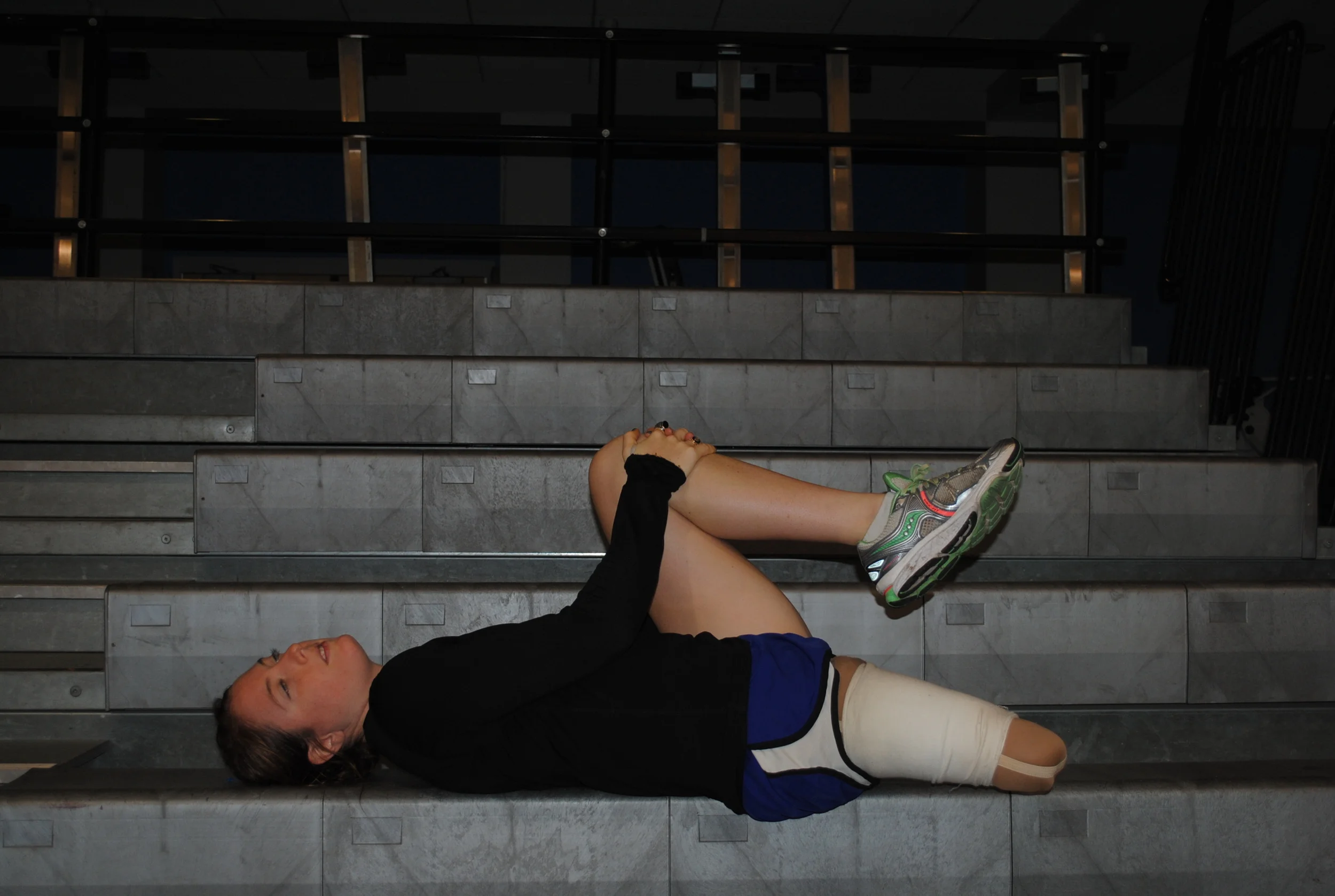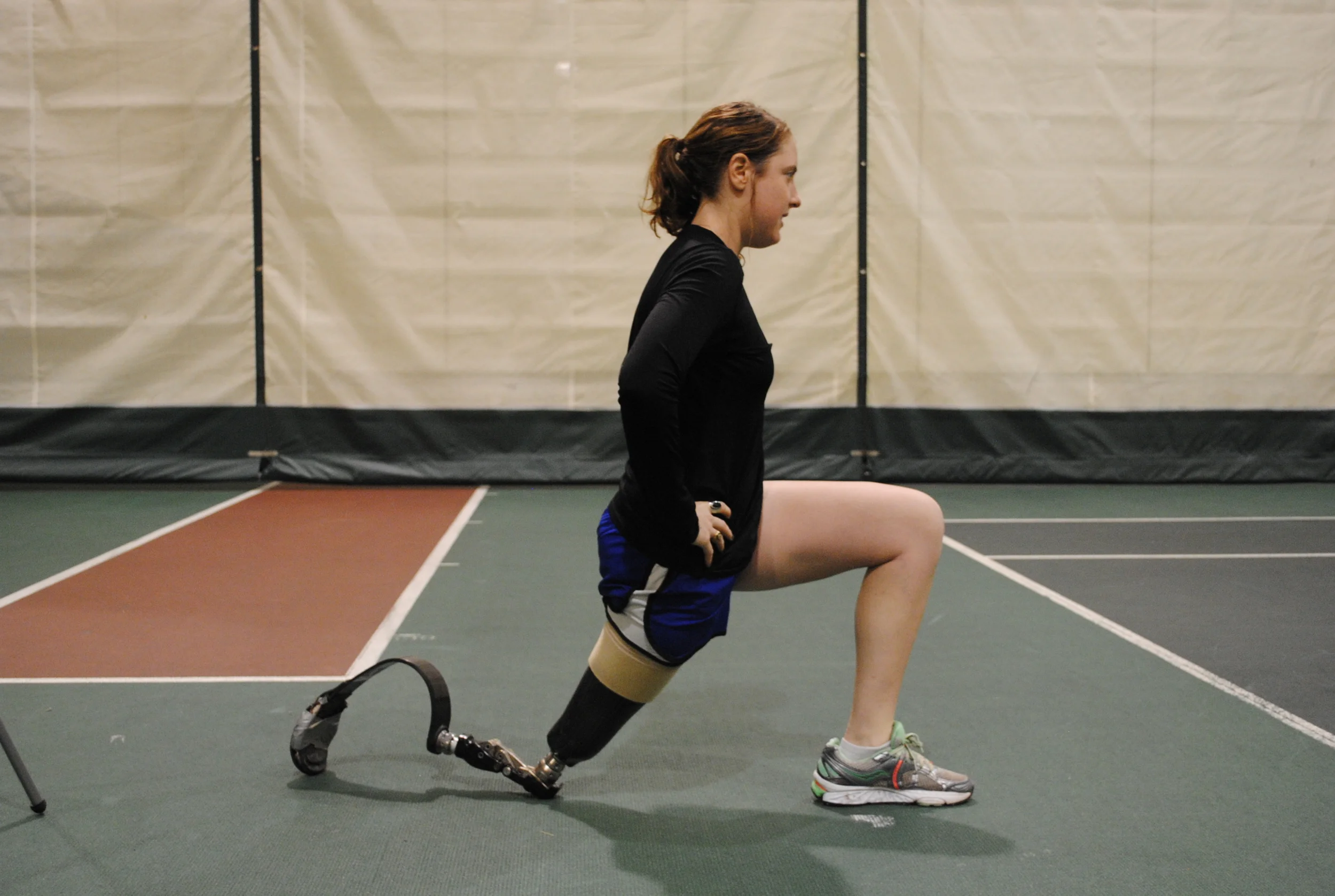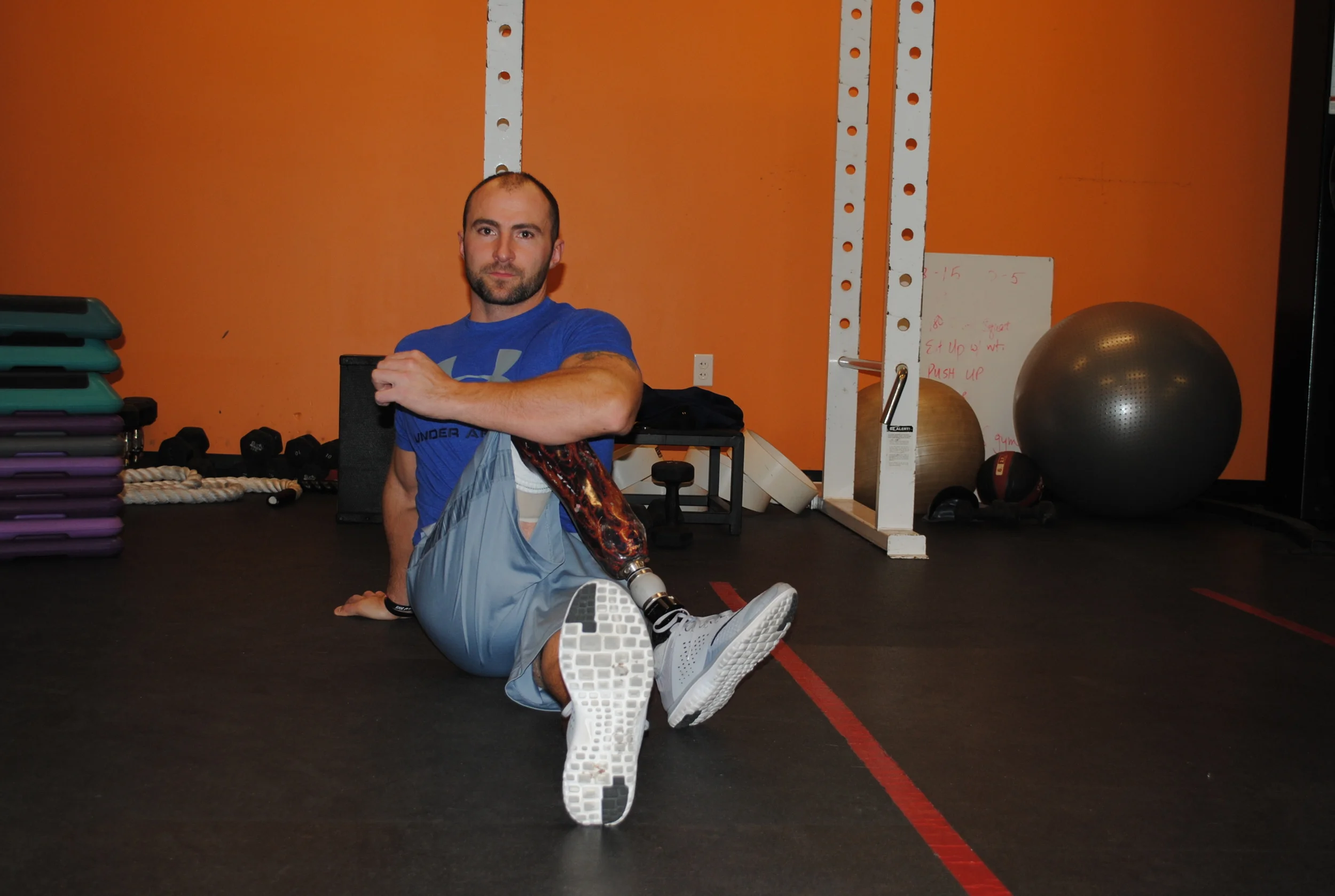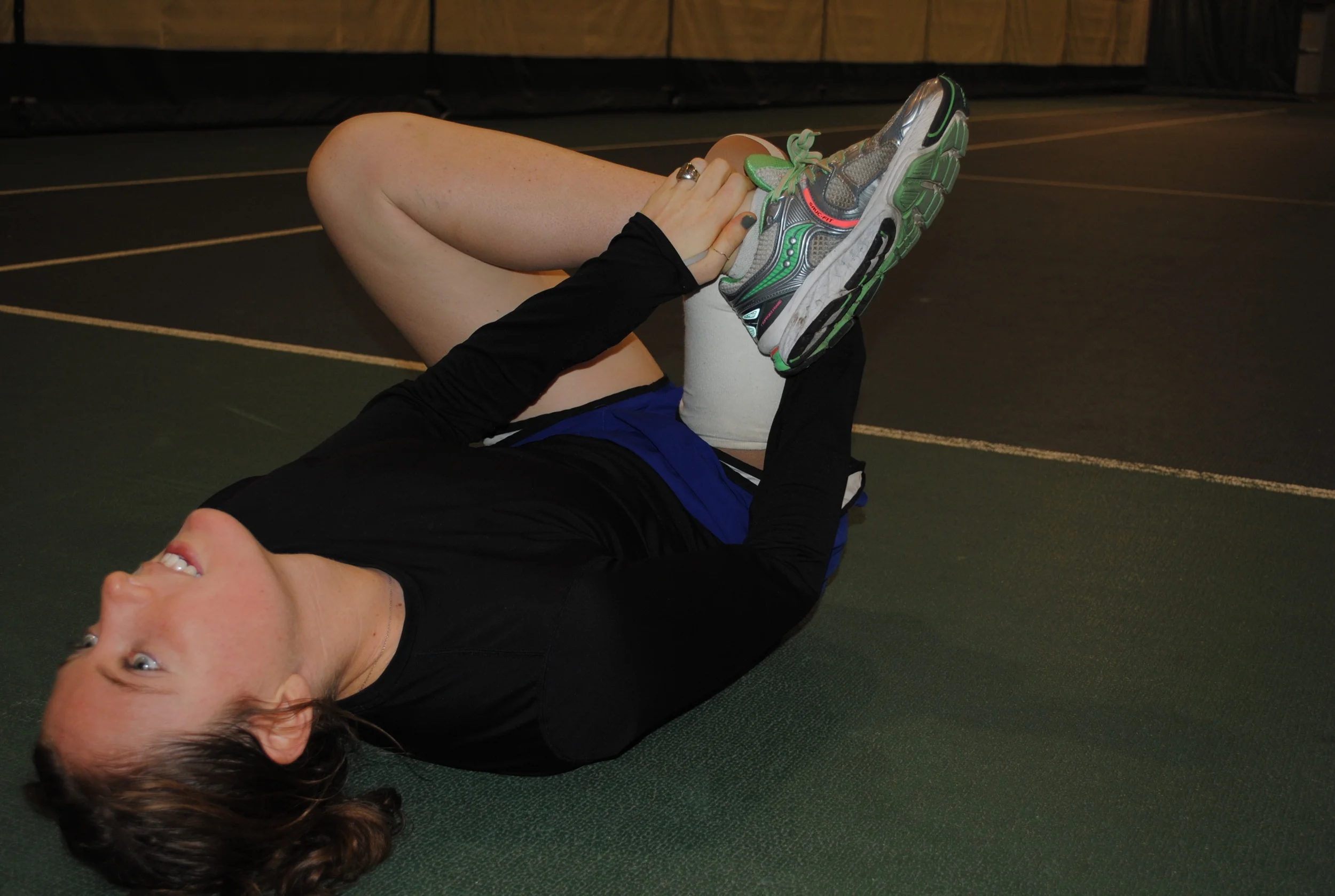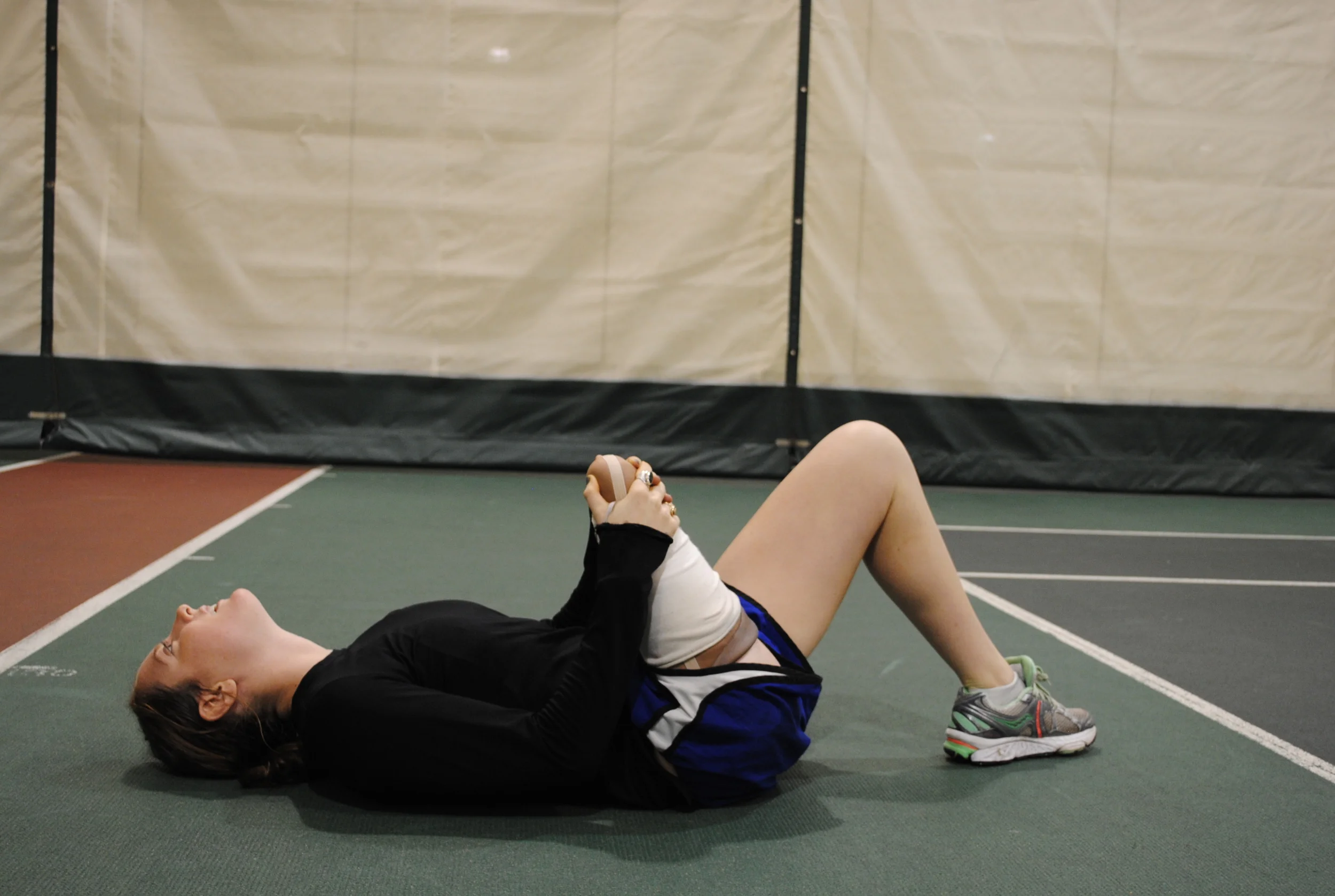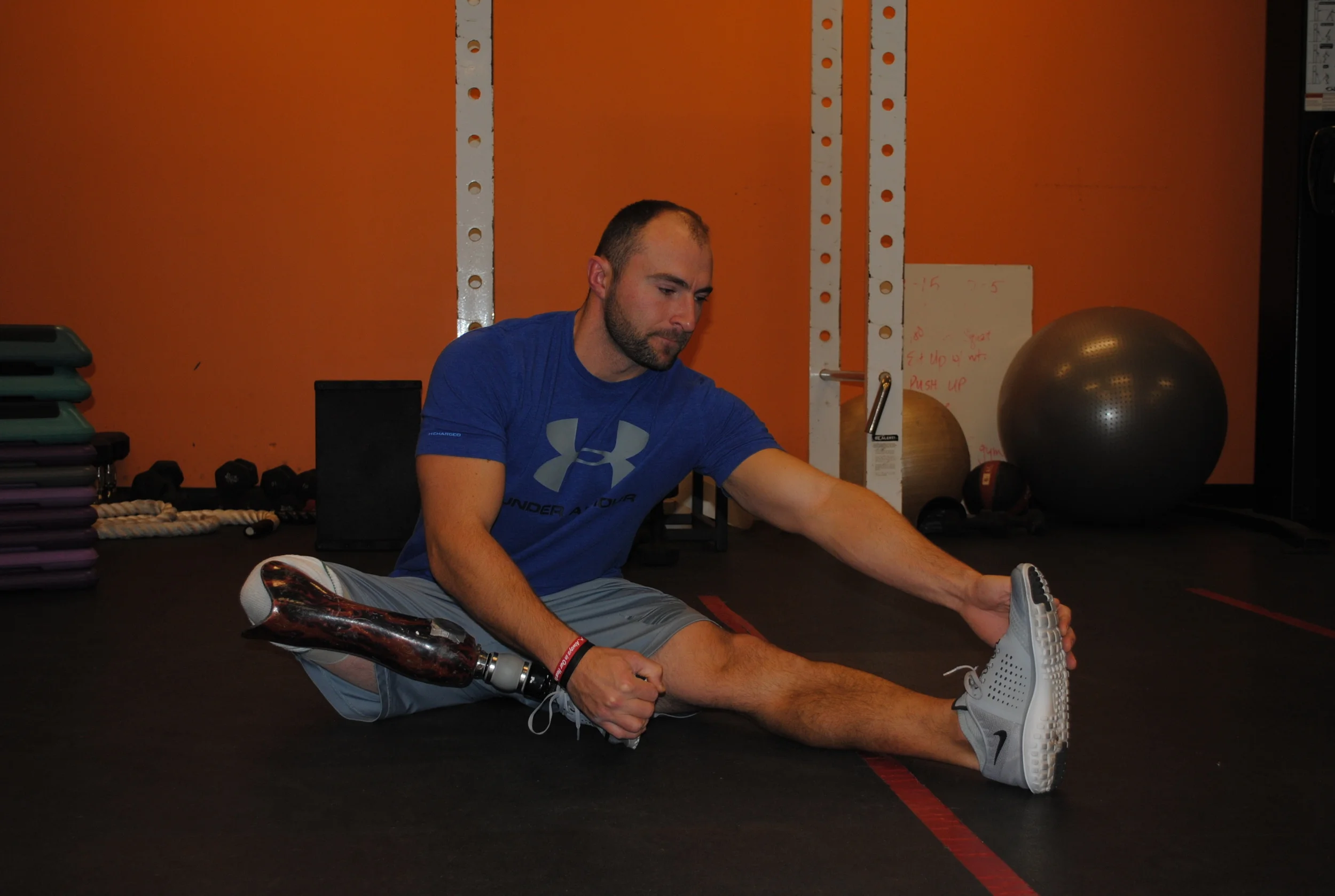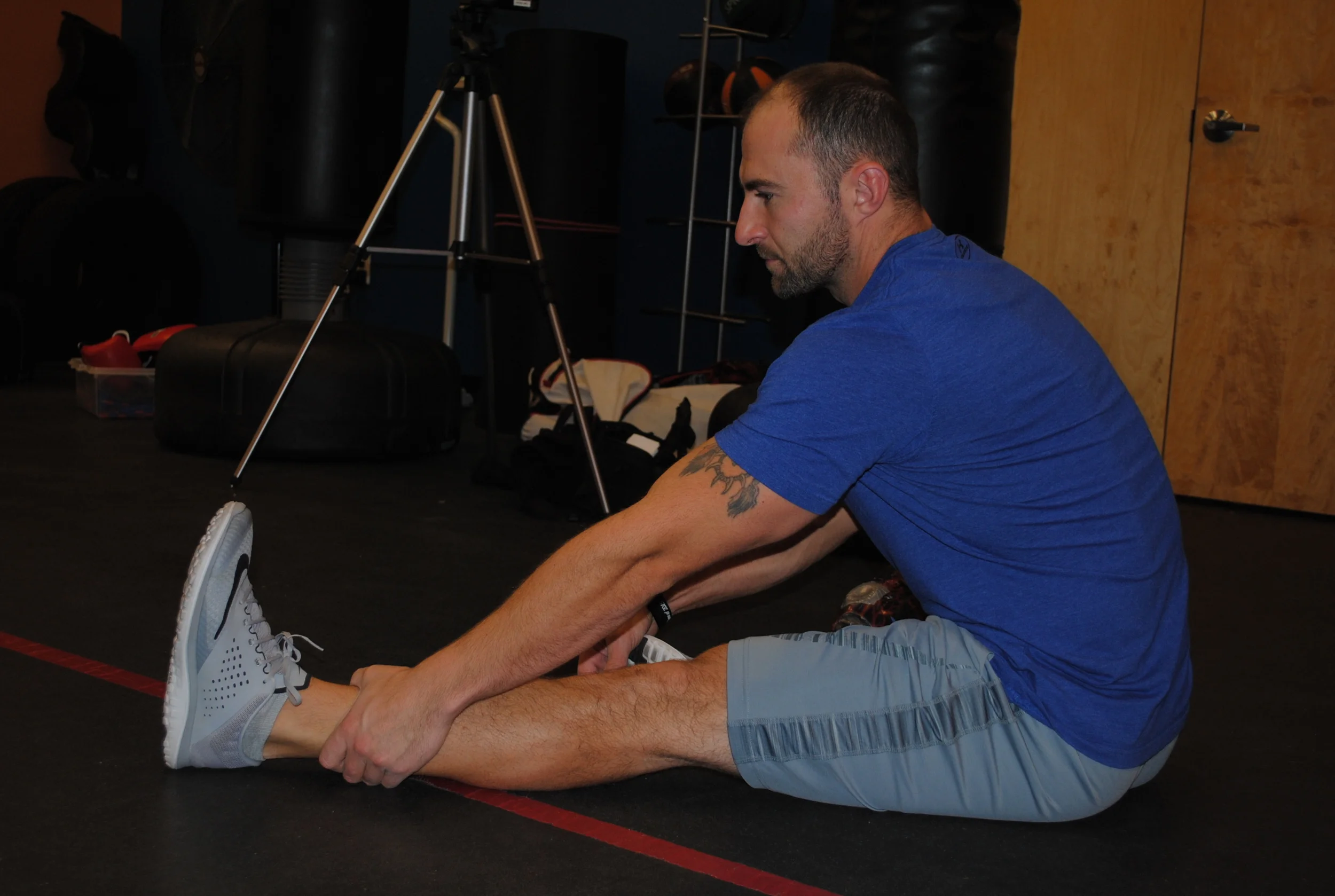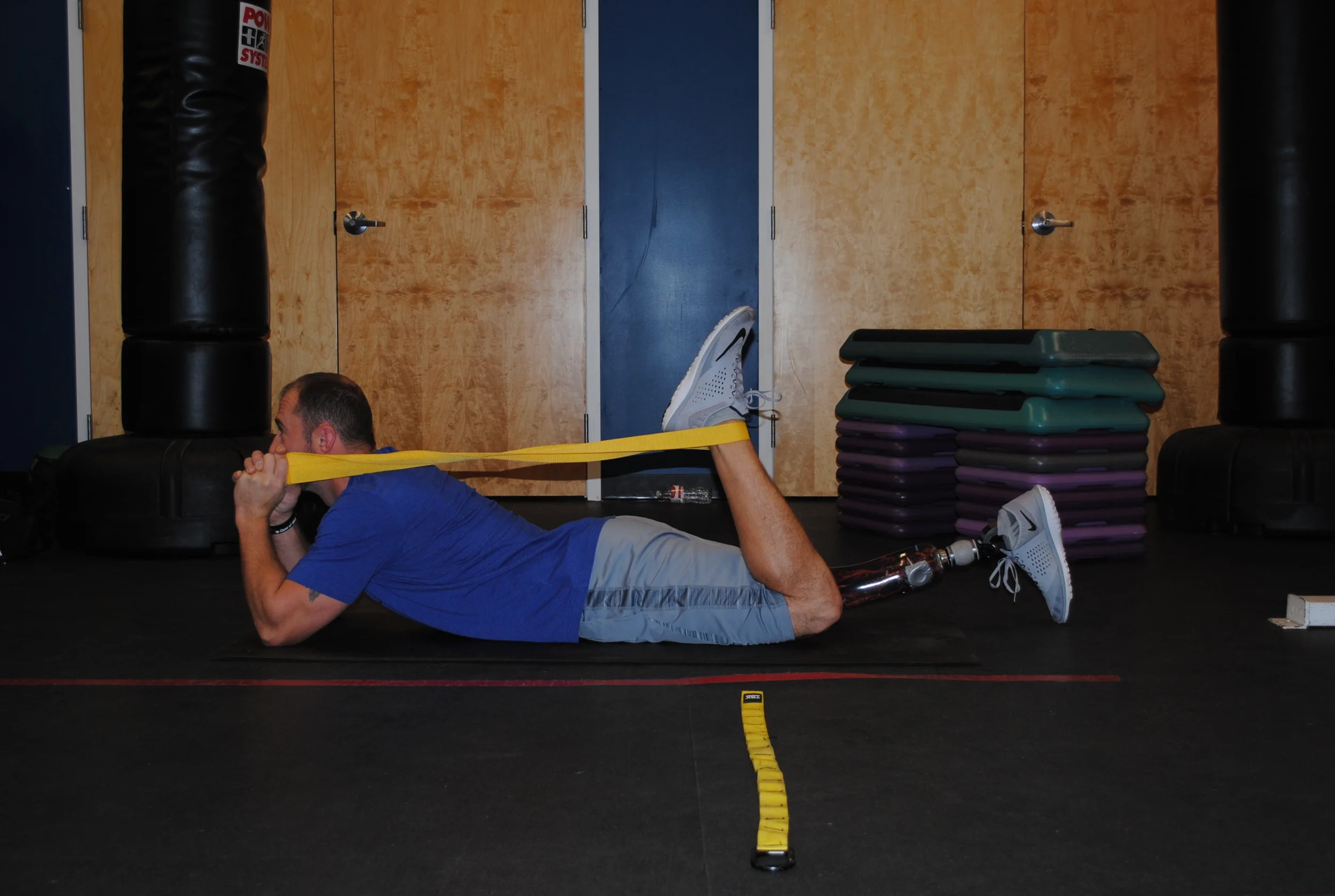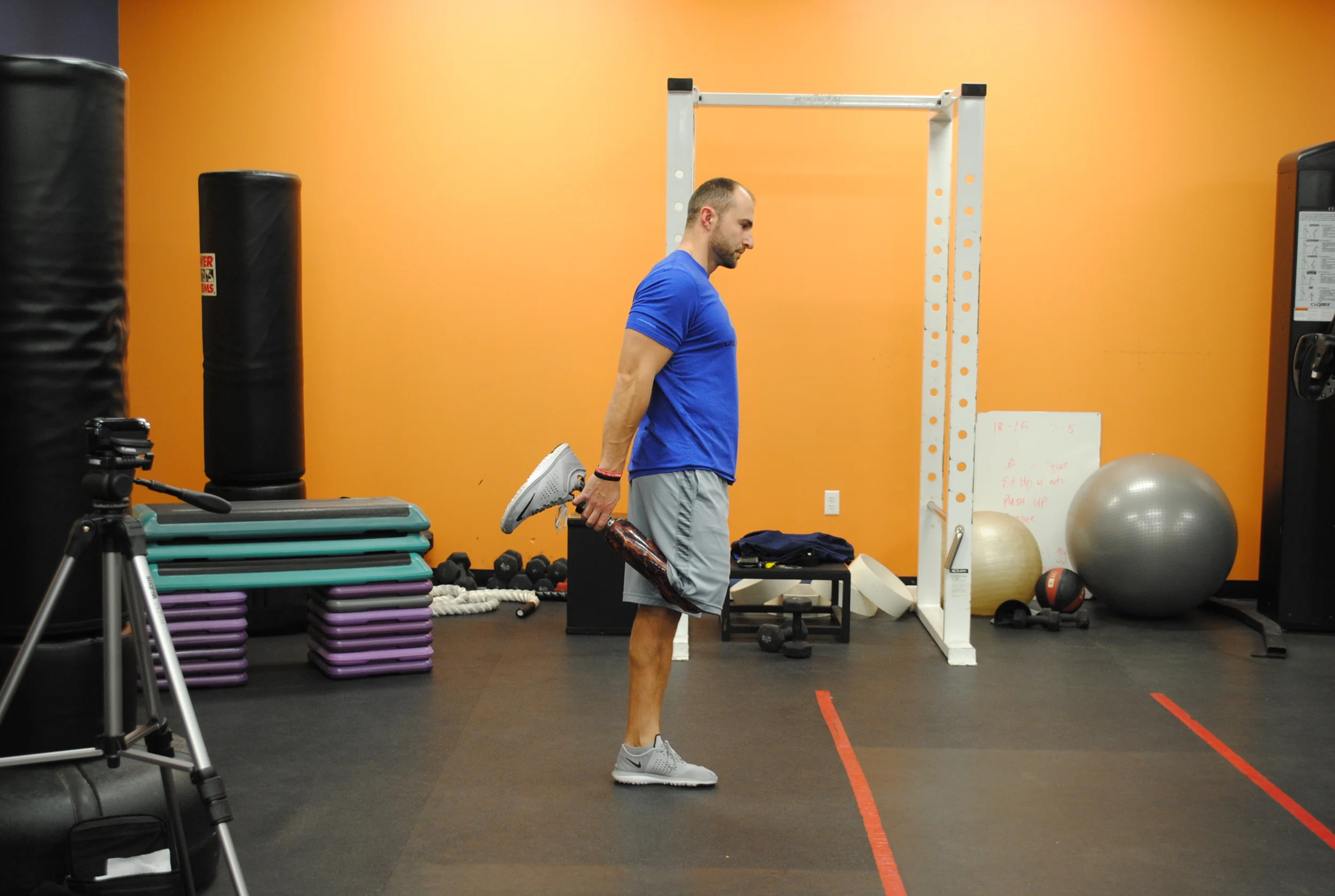INJURY PREVENTION STRATEGIES
residual limb care
Skin related issues are often the consequence of poor prosthetic fit or poor hygiene practices. In order to prevent infections as well as abrasions and blisters to your residual knee, it is important that you follow the guidelines listed below.
Cleaning
- After every run you should clean your liner and residual limb with soap and water.
- Make sure your residual limb and liner are completely dry before putting your prosthesis back on.
- If you are traveling with extra clean liners it is recommended that you store them in a sealed plastic bag. Throwing liners in with other items that may be dirty can increase the risk of bacterial infections.
- Pictured to the left is a bacterial infection that can result from a lack of residual limb hygiene.
- An infection like this can prevent you from wearing a prosthesis to walk and participate in your daily life so it is critical to take the time to wash your limb and liner after you run in order to prevent infections from occurring.
- If you discover a rash such as this on your limb make an appointment with your doctor. It is possible to develop a Staph infection in your limb and waiting to get treatment allows the infection time to reach your bone which is a serious medical issue.
- Infections can continue to live in your liner so if you develop an infection make sure you throw out your liner. It is possible to reinfect yourself with a contaminated liner.
Sweat control
One way that you can control for sweat is to put deodorant on your residual limb every night before going to bed. Some individuals may experience irritation as a result of the deodorant so speak with your prosthetist about the best brand for you and trial it on a small area.
Another method is to wear a sock underneath your liner in order to absorb some of the moisture. Just make sure that the sock is shorter than the liner so that the liner can contact the skin in order to create a proper seal.
A third way to control for sweat is to stop during your run, take off your prosthesis to wipe away the sweat and then put your prosthesis back on to continue running.
residual limb volume fluctuations
- Volume changes in the residual limb can result in movement of the limb in the socket which often causes blisters to form.
- It is important that your residual limb volume is stable when you decide to begin running however even then, limb volume will fluctuate during your training.
- As the residual limb becomes more muscular throughout the beginning of your training, your socket may no longer fit and you will need to visit your prosthetist to adjust for these volume changes.
- Even during a single run residual limb volume can decrease as you sweat.
- Increasing sock ply throughout a run or for a short term period is recommended so that you can continue training, however if it is something that you consistently need to do it is a sign that you need to visit your prosthetist and potentially be fitted for a new socket.
Strengthening
Hip and Leg strengthening
- Strengthening exercises of the lower limbs can help prepare them to tolerate the forces they will be placed under while running. Due to increased speed with running, there is an increase in forces that are absorbed into the legs when they land on the ground and there is an increase in the amount of force they must produce to propel an individual forward at higher speeds.
- Reduced strength in the legs can result in loading asymmetries between legs as well as compensations by certain muscles to make up for areas of weakness.
- Key muscle groups to strengthen on the residual limb:
- Hip flexors
- Hip extensors
- Hamstrings (for individuals with below knee amputations)
- Additionally, for individuals with amputations on one side, the sound limb must perform a greater amount of work than the residual limb or the legs of individuals without amputations who are running. Therefore, it is critical to ensure that the musculature of the sound leg is strong enough to meet the demands of running and is not susceptible to overuse injuries. The single leg squat progression outlined on the strength, conditioning, and agility page of this website is one way to strengthen multiple muscles of the sound limb at once.
Core strengthening
- The core consists of the lower back, the pelvis and hips and the muscles that provide movement in this area (including the abdominals).
- A strong core provides a stable base for the legs during running and can help to prevent injuries such as low back pain.
- Below are two types of planks which are exercises that can be used to strengthen the core musculature.
- Pictured to the left is a forearm plank.
- Using your forearms to support your body, engage your abdominal muscles to hold this position.
- Your body should form a straight line from your head to your toes.
- One way to cheat is by bringing the hips up in the air or dropping them towards the floor - this makes the exercise easier and less effective.
- Work up to 3 x 30 second holds.
- Pictured to the left is a side plank.
- Supporting your weight on one forearm and your feet, engage your core musculature to hold your body up in the air.
- You can either stack your feet one on top of the other or you can stagger your feet on the ground to increase your stability in this position.
- Your body should form a straight line down from your head to your feet.
- Your hips should not be raised higher or dropped lower than the rest of your body.
- Work up to 3 x 30 second holds on both sides.
stretching
Stretching is an important part of your injury prevention because when your muscles are shortened (what some refer to as tight muscles), they can position your body in a way that promotes injuries and this shortening alters their ability to contract as optimally potentially causing injuries and compensations from other muscles.
- For example when your hip flexors are tight, they can position your pelvis in a way that increases the curve of your lower back. This then alters the muscle length of your back musculature and can cause back pain.
- Another example is that when your hamstrings are tight, they are unable to generate as much power as they normally can and they can become overworked and result in a muscle strain.
Stretching can be performed with the prosthetic limb on or off. It may be more difficult initially to balance and control for the prosthetic limb, especially if your amputation is above the knee, so for some it is easier to begin stretching with the prosthesis off and work up to stretching when it is on.
The duration of stretching is often recommended as a cumulative hold of 90-120 seconds. Often people tend to perform each stretch 3 times for 30 seconds. If you cannot tolerate a stretch for 30 seconds you can also stretch for a shorter amount of time with a higher amount of repetitions.
hip flexor stretches
You should feel these stretches in the front of your hip.
Stretching without your prosthesis
Stretching with your prosthesis
- Begin with in a high kneel position with the knee of the side to be stretched on the floor.
- Keeping your back straight, lean forward at the hips until you feel a stretch in the front of your hip.
- Tucking your tailbone in this position will increase the feeling of the stretch.
- Lay on your back on a raised surface such as a table or bed.
- Allow the leg to be stretched to hang off the side of the table and bring your other knee to your chest.
- Some may feel a stretch simply with this position, others may need to apply some pressure over the top of the thigh of the leg being stretched.
Gluteal stretches
You should feel these stretches in your buttocks region
- Begin laying on your back with both knees bent, feet flat on the floor.
- Take the leg to be stretched and place the ankle on the knee or thigh of the opposite leg, making what looks like the number four and lift your legs towards your upper body until you feel a stretch.
- Begin by sitting with both legs straight out in front of you.
- Bring the leg to be stretched over the other leg so that your foot is flat on the floor.
- Hug your knee close to your chest in order to increase the stretch.
- This stretch can be performed with the prosthesis on or off; for individuals with above knee amputations, pull your residual limb across your body and up towards your chest simulating the movement in the picture above.
Hamstring stretches
These stretches should be felt in the back of your thigh
Stretching without your prosthesis
- Begin laying on your back with both legs out straight.
- Lift the side to be stretched and pull your leg towards your chest until you feel a stretch.
- If your amputation is above the knee you may feel this stretch in the gluteal/buttocks region more so than in your hamstring.
Stretching with your prosthesis
- Begin sitting with the leg to be stretched out straight to the side and the opposite leg tucked in with foot near your inner thigh.
- Reach down the leg being stretched, keeping your back straight, until you feel a stretch.
- If you are stretching your sound limb, be careful not to pull your toes up towards you as this can stretch the nerves in your leg and will be felt in your calf.
quad stretches
These stretches should be felt in the front of your thigh
- This stretch is performed in standing. If balance is a concern you can always hold on to a nearby stationary object such as a table.
- Grab the ankle of the leg to be stretched and bend the knee until you feel a stretch.
- Tucking your tailbone in this position will increase the stretching sensation.
- Lay on your stomach with both legs out straight. A pillow can be placed under the stomach if you have back discomfort in this position.
- With a towel or band around the ankle of the knee to be stretched, slowly bend the knee until you feel a stretch.
proper prosthetic fit
An improperly fitting prosthesis is one of the most common causes of injuries for individuals with lower limb amputations. If the fit of your prosthesis less than optimal it can lead to alterations in muscle length, changes in the ability of your muscles to work properly due to restrictions of the socket, and often results in gait deviations/compensations that lead to asymmetry with walking and/or running and can cause injuries.
Signs your prosthesis may need adjustments:
1. If you notice that you are displaying any gait deviations while running.
- The easiest way to determine this is to videotape yourself while running, that way you can show your prosthetist the video to help assist their examination.
2. If you notice that you are pistoning in your socket while running. This can be a sign that the volume of your residual limb has changed and you may require a new socket.
- Pistoning refers to when your residual limb moves excessively within the socket.
3. If you notice frequent blisters or sores upon visual inspection of your limb.
- This may indicate that your socket is applying pressure to areas that are not tolerating that amount of load or that you are possibly pistoning as a result of volume changes to your limb and movement in the socket is resulting in damage to your skin.
4. You should be able to put your prosthesis on for a run and not need to remove it until you decide you no longer want to run. You should not be experiencing discomfort that causes you to take the limb off or stop running.
If you notice any of the above, make an appointment with your prosthetist so that the necessary adjustments can be made and future injuries can be avoided.





